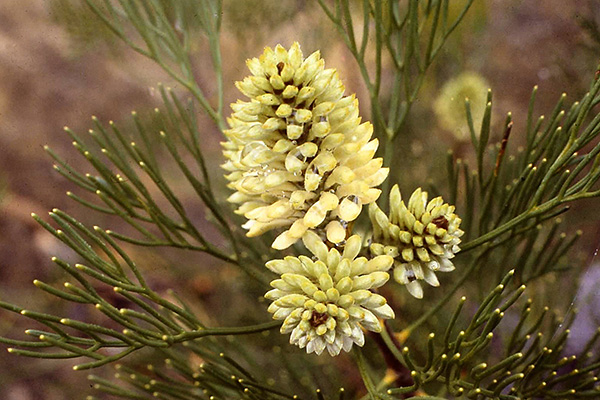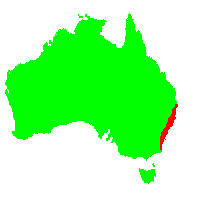General Description:
Petrophile is a genus of around 40 species, all occurring only in Australia. They are found in the southern half of the continent in temperate regions. Most are small to medium sized shrubs having flower clusters arranged in elongated or globular heads. The fruits are also elongated or globular in shape and the appearance of the fruits gives rise to the common name of “conebushes” or “coneflowers”. The genus is closely related to Isopogon.
Petrophile pulchella is a small to medium shrub up to 3 metres high but often smaller. The leaves are terete (rounded in cross-section) and divided into segments. The small flowers are cream in colour and occur in elongated clusters about 30 – 40 mm long at the ends of the branches. Flowering occurs in late spring and early summer. The fruit is an elongated cone shape containing numerous seeds protected by woody bracts. The fruits remain on the plant for an indefinite period and only release the seeds after a fire or the death of the plant.
This species often occurs in the same general area as P.sessilis and P.canescens. Intermediate forms between P.pulchella and the other two species are known to occur.
Petrophiles are not often cultivated but this species makes an interesting, if not spectacular, addition to a native garden. It performs best in a well drained position in full sun or light shade.
Propagation from seed is relatively easy and no pretreatment is necessary. Cuttings on firm, current season’s growth are also successful but may be slow to strike.

Petrophile pulchella
Photo: Brian Walters
 Australian Native Plants Society (Australia)
Australian Native Plants Society (Australia)













